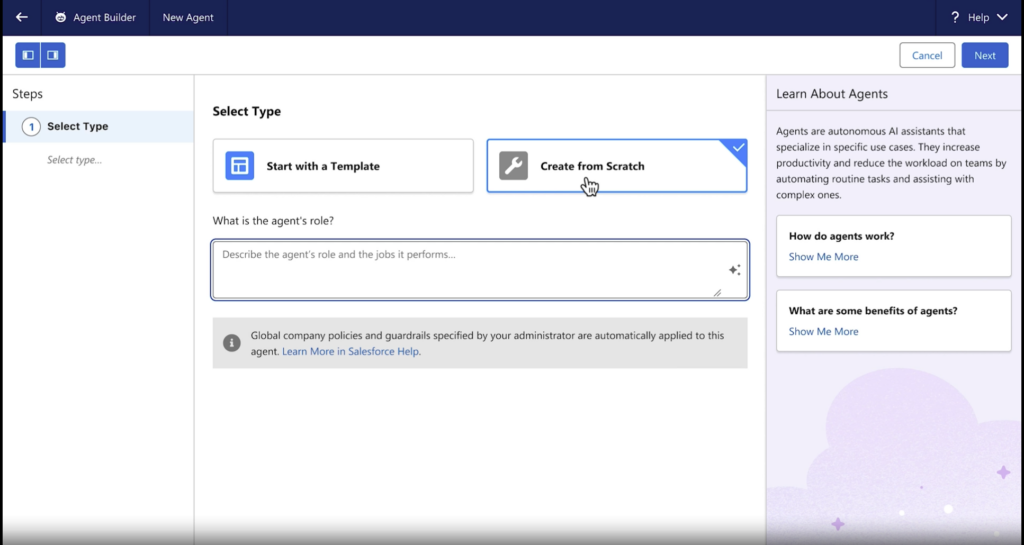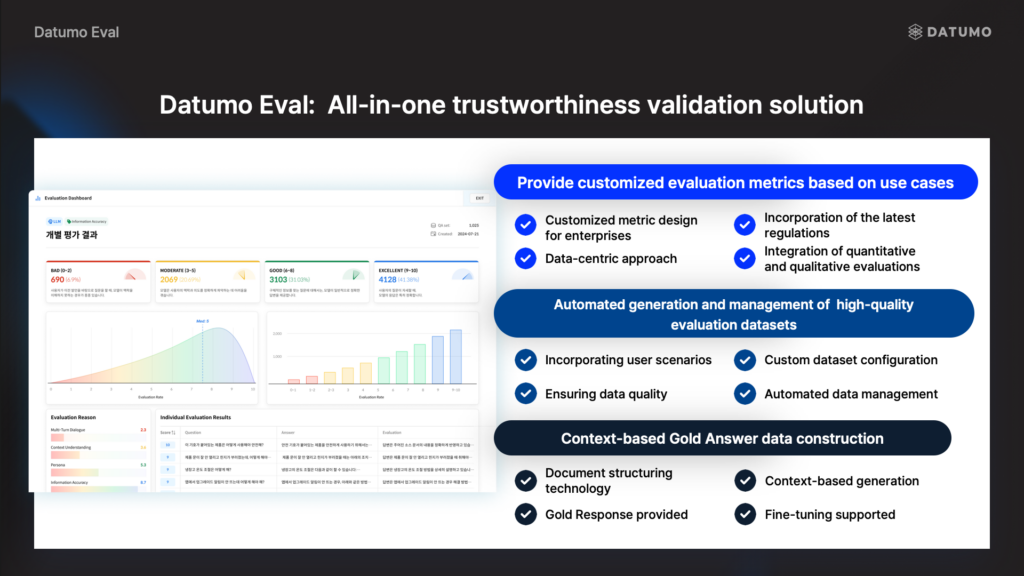An AI agent goes beyond simply executing commands or following rule-based processes—it can perceive data, make judgments, and take action autonomously. In other words, it’s a form of self-directed artificial intelligence that understands situations and proactively responds without needing direct human instruction.
In March 2025, global CRM leader Salesforce unveiled Agentforce 2dx, its next-generation AI agent platform. Let’s take a closer look at how AI agents are beginning to integrate naturally into real-world business operations.
Key Features of Agentforce 2dx
Agentforce 2dx: Taking AI Agents Beyond Chatbots
Agentforce 2dx isn’t just another chatbot platform. It offers a rich suite of features designed to deeply integrate and automate AI agents across a wide range of business scenarios. Salesforce boldly declares:
“Because if you can describe it, Agentforce can do it.”
If you can articulate what you want, Agentforce claims it can bring it to life—emphasizing the simplicity of designing and operating agents through natural language.
Here’s how Agentforce 2dx leverages natural language processing to build real-world functionality:
Topic-Based Design
Users describe the roles or actions they want an agent to perform using natural language “Topics.”
The Agent Builder then analyzes these descriptions and automatically sets up the necessary data calls, condition branches, and action executions.AI Assist
Based on a user’s goal or process written in plain language, Agentforce suggests optimal workflows and automatically configures API calls and backend logic.MuleSoft Topic Center Integration
Even complex external API integrations can be set up with just simple natural language prompts, thanks to its seamless connection with MuleSoft’s Topic Center.Slack and Salesforce Workflows Integration
Agentforce can detect context from conversations happening in channels like Slack and automatically trigger workflows as needed.
Now, it’s not just developers who can create powerful AI agents—anyone can, simply by using natural language.
A new era is emerging, where if you can describe it, you can build it—an era shaped by AI agents.

Assigning roles to an AI agent using natural language. Source: Salesforce
Text–Based Agent Creation Technology
Traditional software automation typically required developers to manually write clear commands and programming logic. However, platforms like Manus from China—and now Salesforce—are embracing a new approach: defining and automating AI agent behavior based entirely on natural language inputs.
Here’s a breakdown of the key technologies that make this possible:
1. Natural Language Understanding (NLU)
When a user casually says,
“Send a welcome email automatically when a new customer signs up,”
Agentforce processes the sentence to extract:
Intention — the user’s desired goal (e.g., automating email delivery)
Entities — the specific objects involved (e.g., new customer registration event, email content)
In short, Agentforce can “read” natural language and understand what action is needed and what data it must work with.
2. Topic and Instruction Generation
Based on its understanding, Agentforce automatically generates:
Topics — the broader subject the agent will handle (e.g., “New Customer Onboarding”)
Instructions — specific tasks to perform under given conditions (e.g., “Send a welcome email when a new customer is registered”)
This transforms complex workflows into easily readable, structured steps derived directly from natural language.
3. Automatic Action Mapping
Agentforce then searches through Salesforce’s internal services—or integrated external APIs—to automatically map the necessary actions.
For example:
“Send welcome email” → Connects to Salesforce’s email service action
“Issue coupon” → Triggers an ERP system’s coupon-generation API
Because Agentforce can handle external API calls through natural language prompts, users can build integrated backend processes without dealing with technical complexity.
4. Testing and Optimization
Agentforce doesn’t just build workflows—it also validates them through a Testing Center. It automatically checks:
Context relevance
Faithfulness (factual correctness)
Safety
If an output doesn’t meet expectations, Agentforce even suggests natural language-based corrections, guiding users on how to refine and optimize the agent’s behavior quickly and easily.
The Importance and Risks of AI Agents
The use of AI agents today goes far beyond simple task automation—they are becoming critical for proactively and intelligently responding to real-time business needs.
AI agents enable businesses to:
Handle repetitive tasks autonomously
Manage customer and employee interactions proactively
Significantly improve operational efficiency and agility
Unlock new revenue opportunities and reduce costs
Leading companies like OpenTable, Adecco Group, Engine, and Precina are already seeing tangible results by adopting AI agents, achieving:
40% faster problem resolution
25% higher lead conversion rates
Up to 20% reduction in operational costs
However, alongside the growing excitement, there are very real technical risks associated with AI agents:
Hallucination Risk:
LLMs may generate responses that are factually incorrect or misleading.Contextual Errors:
Agents might make decisions that don’t align with the current situation or business logic.Security Vulnerabilities:
There’s always a risk that agents could produce harmful, offensive, or unsafe outputs.
To deploy Agentic AI safely and reliably, it is essential to establish robust methods for systematically verifying and controlling the quality of LLM-generated responses.
Without strong governance, the power of AI agents could just as easily become a liability.
Datumo Eval

Lorem Ipsum is simply dummy text of the printing and typesetting industry.
Datumo Eval: The All-in-One Solution for Evaluating and Managing LLM Trustworthiness
Datumo Eval is an all-in-one solution that uses AI agents to rigorously assess and manage the quality and reliability of large language models (LLMs).
By distributing tasks across multiple specialized AI agents, Datumo Eval generates sharp, targeted questions to thoroughly probe LLM performance.
Key evaluation areas include:
Trustworthiness Assessment:
Verifies whether the LLM provides safe, appropriate, and reliable answers to users.Context Relevance Evaluation:
Measures how closely the LLM’s responses align with the context of the conversation or task.AI Red Teaming / Safety Evaluation:
Detects and blocks aggressive, biased, or unsafe outputs before they can cause harm.
If you’re applying LLMs—or building services powered by them—in your business, maintaining trust and safety is non-negotiable.
Incorrect information, biased responses, or mishandling sensitive issues could easily erode user trust and create serious risks.
Datumo Eval is an essential tool to preemptively identify such problems and ensure your AI services are both reliable and high quality.



